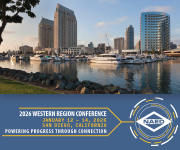By Stan Walerczyk
This column discusses more of the Human Centric Lighting (HCL) projects, light as a drug and f.lux.
Now that most of the low hanging fruit of T12 and basic grade fluorescent T8 projects have evaporated, the ‘soft savings’ of HCL will often be required for customers to approve projects. Informed distributors, who stock, or at least can easily obtain high performance and cost effective specialized fixed Kelvin and tunable (dimming and color or Kelvin changing) LED products and controls for them will provide value added service to contractors. Informed contractors will have a big advantage over non-informed contractors.
HCL can also help distributors and contractors to be more productive and improve their well-being.
Philips has done some interesting school and hospital projects. Here are videos on their SchoolVision and HealWell projects.
http://www.youtube.com/watch?v=3lfc1y8q5l4
http://www.youtube.com/watch?v=b4avz4Jr6YU
Osram, the parent company of Sylvania, has also done some good school and aged care facility projects. Here is information on one of its school projects. The aged care facility study should be publicly released soon.
http://www.osram.com/osram_com/news-and-knowledge/the-biological-effects-of-light—light-means-quality-of-life/projects/public-high-school-in-miesbach/index.jsp
I helped on the Vulcan office building project in Seattle. It now has tunable troffers, controlled by an advanced control system including daylight harvesting, and tunable task lights. A case study may be written.
Currently I am working on a school of the future project with tunable 2700 – 6500K LED troffers used all day and 11,000K troffers, which can be used to really suppress melatonin first period in the morning and maybe also after lunch. This project and report should be competed by the end of the year.
In addition to K12 schools, hospitals, aged care facilities and offices, HCL projects can be done in almost any application including colleges, manufacturing facilities, call centers, sporting teams’ facilities, fitness centers, airports, stores, homes, etc. HCL can be quite effective for daytime applications and even more effective for 2nd and 3rd shift work applications.
Optimal HCL projects can often be a challenge. The HCL Society and Committee, of which I am the chair, are willing to help you. Please contact me for more information.
Light can be better than caffeine.
Caffeine has about a 5 hour half life in your body. If you only have one 200 mg of caffeine coffee, soda or other drink at 1 PM when the post lunch dip can happen. At 6 PM you will have 100 mg of caffeine and at 11 PM 50 mg of it. If you go to bed then, that amount of caffeine may cause a significant delay before you can fall asleep. If you have any additional caffeine before or after that one, sleep can be more of a challenge.
Relatively high intensity and high CCT light for 30 – 45 minutes can provide the same alertness and dissipates within about 2 hours. This can be really important for people working in the evening before they go to bed. Also decisions from light as a drug can be better than ones with caffeine, because caffeine may make people jittery.
Many people use their smart phones, tablets and lap top computers right before going to bed and even in bed. There is a lot of blue content in the background lighting in these devices, which can cause sleep delay. F.lux and similar devices can be downloaded for free and reduce that blue content in the evening.
https://justgetflux.com/
My email is stan@lightingwizards.com, and I look forward to your comments on existing columns, as well as ideas for future columns.
Tagged with Exclusive Feature, lighting, tED




